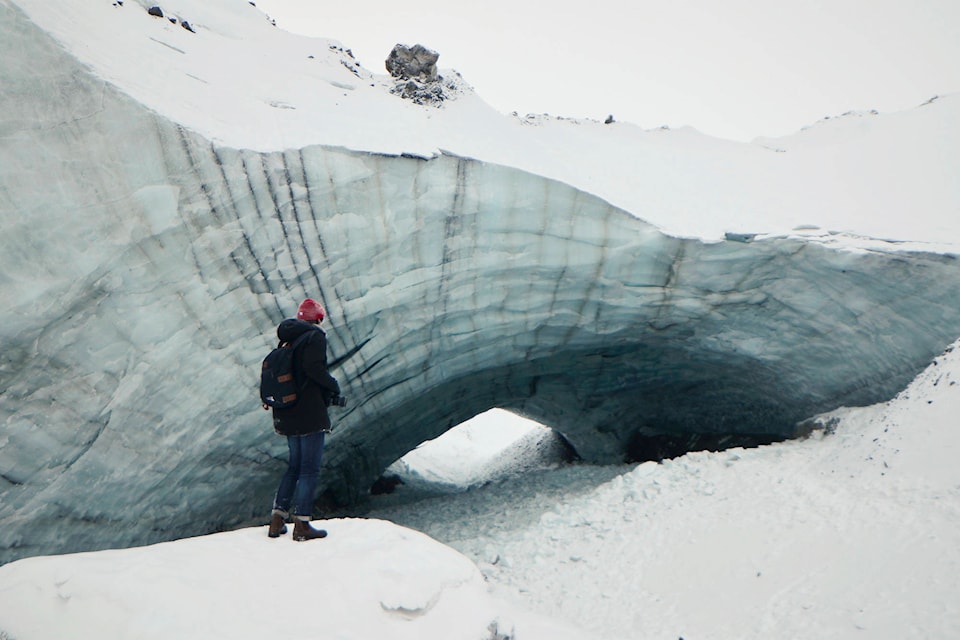The Kluane ice cave, a remnant of a once-mighty glacier, is no more.
The popular natural attraction, which was located a roughly 13-kilometre drive north of Haines Junction followed by a seven-kilometre hike, appears to have finally collapsed earlier this month.
The Yukon Geological Survey’s head surficial geologist, Jeff Bond, said the survey hasn’t sent anyone out to the site, but photos shared by veterinarian Michelle Oakley on May 28 are “pretty definitive.”
“You can just see the remnant of the arch on the right-hand side … it looks like it kind of collapsed and slid forward,” Bond said. “… It’s like, totally gone for the rest.”
Once a well-kept local secret, the ice cave is believed to have formed during the last mini ice age, which lasted from about 1400 to 1900, when glaciers covered much of North America. It’s formation was likely two-fold: little tunnels often form at the base of glaciers as meltwater trickles down; and, as glaciers recede, they often leave enormous chunks of ice behind on the landscape.
The little tunnel in the ice chunk left behind, in this case, gradually grew as the ice melted, eventually forming a breathtaking, blue cavern streaked with black, rocky debris.
Ice caves are a fairly common phenomenon found at most glaciers (or former glacier fields), but the Kluane ice cave was unusual in that it was relatively easily to get to. Its growing popularity in recent years triggered the Yukon Geological Survey to issue warnings to visitors to enjoy the site but stay out of the cave itself, lest a chunk of ice unexpectedly fall from its ceiling (a fairly common occurrence) or the structure collapse.
There are no reports that anyone was in the ice cave when it actually did come tumbling down.
“I think (the cause of the collapse) was … the ongoing melt, of course, the opening and thinning of the walls of the tunnel,” Bond said. “That’s what’s weakened it for sure, is this sort of growing size of the opening and then the overlying weight obviously led to the collapse.”
“This was its future, for sure,” he added. “These things definitely don’t last. We just had the privilege of having the opportunity to be relatively close to one off the highway.”
The Yukon Geological Survey is interested in seeing more photos of the collapsed cave. Anyone with new pictures can email them to jeff.bond@gov.yk.ca
Contact Jackie Hong at jackie.hong@yukon-news.com
